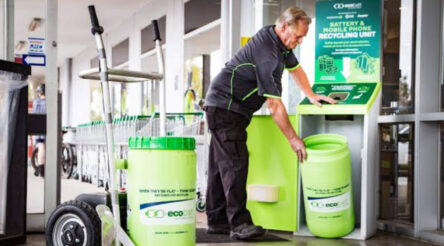A new deal plan for manufacturing – How clusters will accelerate innovation by Rodin Genoff

The lesson from Europe suggests that networking and clustering of small firms is a key to manufacturing success. Here Rodin Genoff shows how it should be done as he joins @AuManufacturing’s campaign to crowd source a new deal plan for manufacturing post Covid-19.
Thriving nations with the highest wages and living standards in the world manufacture their prosperity. Think Germany, Scandinavia, Korea, Singapore, Japan, plus a host of smart advanced manufacturing and tech savvy cities scattered across the United States from Seattle to Houston. They are hotbeds of ingenuity and creativity.
You will find them in top 10 rankings of the Global Innovation Index. Year in, year out, the same countries pretty much share the leader board. Look more closely you will discover they’re also home to industrial clusters, or dense geographical concentrations of interconnected industries, businesses, research universities and the requisite talent to advance competitive advantage.
Clusters accelerate innovation. They ooze a creative stickiness that provides the glue that holds companies together in highly collaborative networks operating in high trust environments that speed up the transfer and diffusion technology. It is this synchronicity that drives productivity and long-term prosperity.
The numbers are staggering: 61.8 million people are employed in European clusters, delivering high tech exports and baked-in current account surpluses. Germany alone has 424 clusters.
Here is the data
EU analyses cluster strength across 51 exporting industry sectors in Europe and identifies 2,950 regional industrial clusters. These industrial clusters account for almost one in four European jobs (61.8 million jobs or 23.4% of total employment) and about half of total employment in exporting industries (50.3%). The majority of the 51 exporting industry sectors have at least 50 per cent of their employment in clusters.
Productivity in clusters is much higher than average productivity, corresponding to a 25 per cent above-average productivity effect. Productivity increases with cluster strength: in basic-performing and medium-performing clusters productivity is 10-15 per cent above average, while productivity in high-performing clusters is more than twice as high as the average (+140 per cent). (Source, European Commission, 2020).
Australia can do better
“Australia isn’t like Germany!” is the all too predictable kneejerk response by most Australian economists and policy makers who bury their heads in the sands of comparative advantage. “It’s like comparing apples with oranges. Australians are good at banking and finance, commodities and agriculture, and education and tourism.”
Global investors don’t give a toss about apples and oranges. In fact they seem exceptionally well disposed toward the interventionist industry policies of Europe, and the mercantilist strategies of Asia that have embraced such approaches as an effective means to drive tech-charged growth and living standards.
Australians ought to care about their future and “how” long term prosperity is created.
The “how” of future-proofing Australia’s high living standards is the BIG question we should all be asking of ourselves.
Australia can do so much better. And as unlikely as it may seem to those in the east of Australia, against the odds South Australians are showing us “how”.
Cluster’s manufacturing prosperity – South Australia shows us how
South Australia might be doing it tough with 7.5 per cent unemployment, but its defence cluster is a leading example of “how”.
It exemplifies world’s best science, technology and knowhow anchored by 25 per cent of Australia’s specialist defence businesses.
Its $50 billion Futures Submarine Programme, $35 billion Future Frigates project and strike fighter projects cluster a rich ecosystem of artificial intelligence, software, electronics, industrial design, engineering, 3D printing and advanced manufacturing companies.
It provides extraordinary opportunities for these companies to transition to new economy industries from renewable energy and cleantech to medical and space technology thus future proofing South Australia in the process.
Australia is in desperate need of a national cluster policy
This is where Germany and Europe have it all over Australia. Over the past decade they’ have formulated intelligent evidence-based industry and innovation policies, with generously resourced programmes targeting energy, circular economy and Industry 4.0 machine to machine, machine to human interfaces.
Across central and northern Europe, bipartisanship underscores political certainty and the ability for business to plan and invest for the long term – and not react to short-term policy political pivots such as the embarrassing annual changes to Australia’s research and development policies.
Canberra, by comparison, seems hell bent on traditional industry policy and the re-casting of lazy industry assistance programs sector-by-sector, election cycle by election cycle. This is so last century.
21st century new economy industry policy is about forging clusters with deep domain knowledge at the heart of global competitiveness. If Australia is to make this new economy transition it needs not one, not two, but many clusters as one finds in Germany.
It’s time to get our fingers sticky, lift our ambitions and deliver a policy that can accelerate Australian entrepreneurship and creativity.
Rodin Genoff is Managing Director, Rodin Genoff & Associates, international cluster and innovation expert and author of Manufacturing Prosperity, edited with Professor Roy Green, and New Women, New Men, New Economy. He is currently running cluster projects in Denmark, Sweden and Victoria.
Picture: Rodin Genoff
@AuManufacturing’s new deal plan for manufacturing is brought to you with the support of Bosch Australia Manufacturing Solutions

Subscribe to our free @AuManufacturing newsletter here.
Topics Analysis and Commentary
@aumanufacturing Sections
Analysis and Commentary Awards Defence Manufacturing News Podcast Technology Videos










